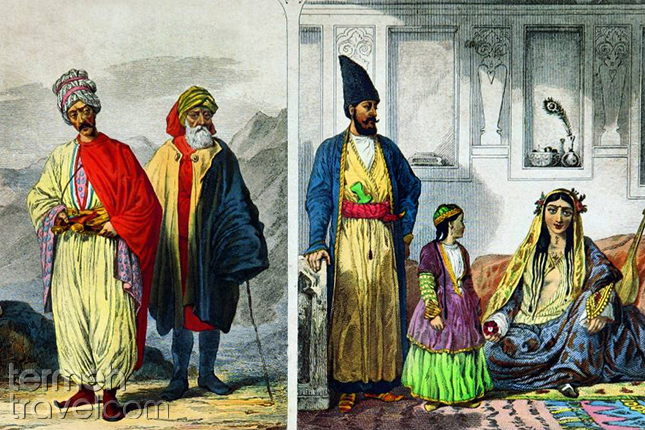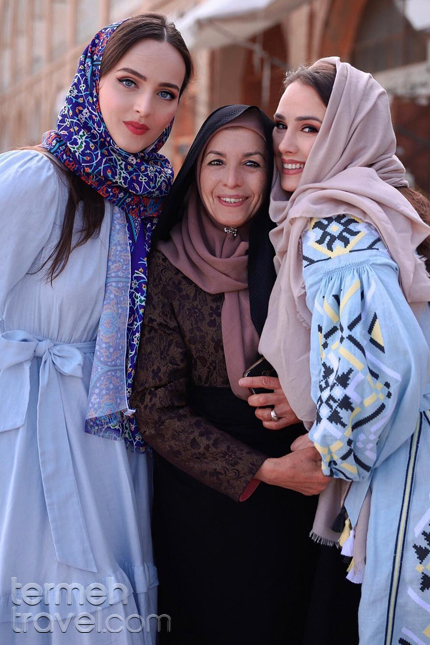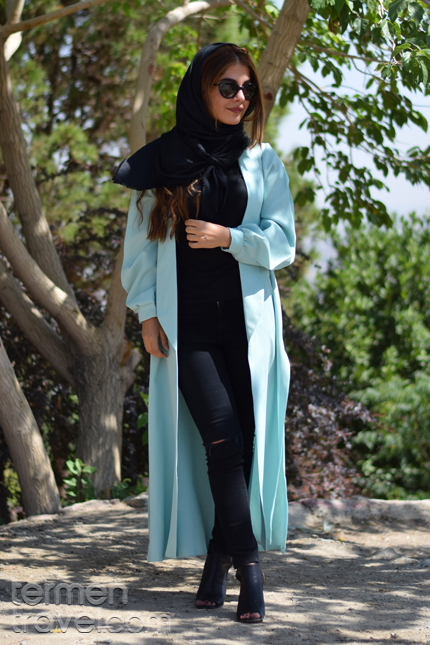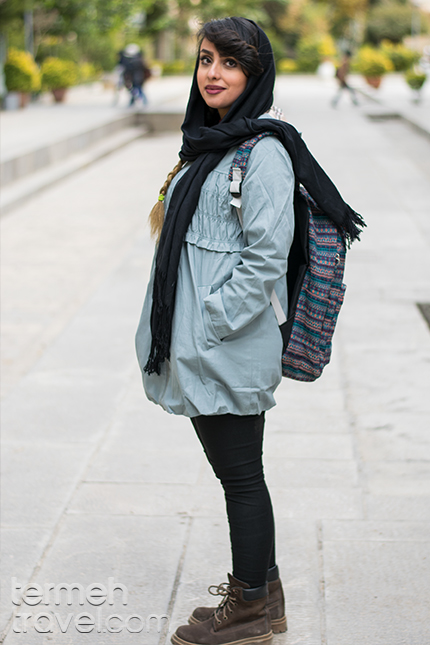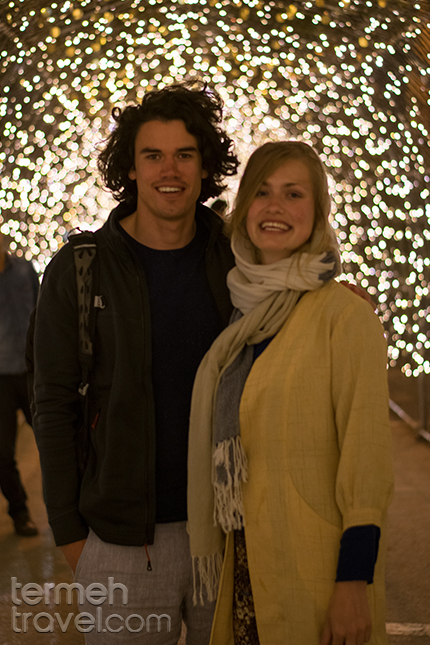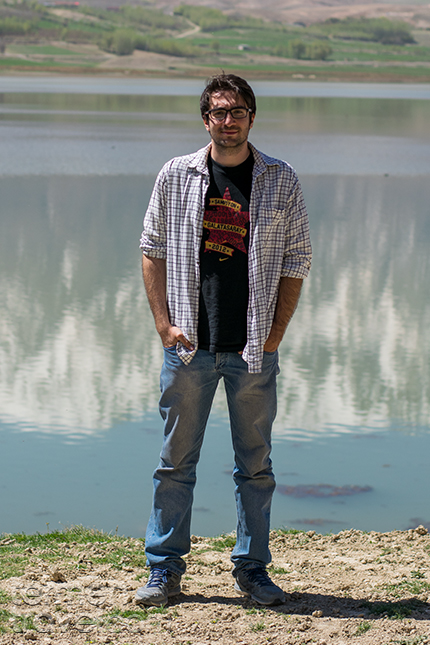Just like the culture, the fashion and dress code in Iran varies. Depending on where you visit, which season it is and what kind of weather you are in, you should wear accordingly. From the full hijab to seasonal items of clothing, here is all you need to know.
Table of Contents
Iranian Traditional Fashion
For understanding the Iranian fashion, we first have to dive into the multiple cultures that Iran has. Every ethnic group has its own traditional local clothes, though people don’t wear those clothes on an everyday basis anymore, it’s the core of modern fashion we see today. The traditional clothes, though different in the eye, have a lot of similarities at heart.
For Women
- Long skirts: Every picture you see of traditional clothes consists of a long (maybe layered) skirt.
- Pants: Usually underneath the long skirt come loose cotton pants so that if moving, when the skirt moves upwards, there would be no risk of a Marilyn Monroe moment.
- Long Blouse (or shirt): Because you can’t be half naked on one half and overdressed on the other half.
- Long scarf (Roosari): A square shape fabric that covers the hair and neck (Iranian hijab).
- Socks: The traditional Iranian women socks are made out of silk, they were also very long and came up to the knees.
- Shoes: They look like slippers and sandals, the only difference is that they cover the toes.
For Men
- Pants: Most of the traditional clothing for men are made out of cotton and loose around the thigh area. They are made out of light colors such as white and light brown so that the heat wouldn’t bother them while they worked on places like fields and farms.
- Shirt: Usually the shirt and the pants are interconnected, made out of the same fabric and are usually collarless.
- Belt: It is made out of a long thin black fabric that they wrap around their waist multiple times. Back in the old days, it was a safe place for their coins, hunting knives, and other accessories.
- Shoes (Giveh): A handmade shoe, made of white cotton and leather sole. Givehs are very comfortable and are great for the summer.
Islamic Dress
In the beginning, when Islam had just entered Iran, it became mandatory for women to wear long scarves to cover up their hair and neck. Later on, those scarves turned into Chador, a large semi-circle fabric that covers the entire body. Chadors were usually made of black fabric, however, in some areas like Varzaneh or Abiyaneh women used white fabric for their Chadors to protect them from the extreme heat. With time, the length, shape, and type of the fabric, plus the color of the scarves have changed, going from Chador to a long Roosari (a square shape scarf) to a shawl (a rectangular scarf). Nowadays there are varieties of hijabs that you can choose from.
Iranian Female Dress
The modern fashion in Iran, from color to fabrics and garments is extremely diverse. However, the base consists of a Scarf, a Manteau (a Pinafore with sleeves), Pants (usually jeans), shoes or sandals. Whether you wear socks or not is your choice and it depends on how the weather is in the area you’re in.
What to wear in winter
Iran has a very diverse climate so if you want to travel to Iran in the winter be sure to pack accordingly.
Winter in the north is exactly what you’d expect it to be, heavy rainfall, snow, cold and muddy, so bring your raincoats, extra blouses, thick pants, cozy socks, and boots. Whereas winter in the south is mostly cool winds and maybe some rain so scratch that super fuzzy coat you are thinking of bringing; a raincoat and blouse will do the job for you.
The climate in Central Iran varies because of the dry weather. Pack your winter clothes (one of each) because it will surprise you and that is the beauty of it. For more info on the different climates check out Iran weather, where diversity begins.
Dress code for visiting Iran
There aren’t strict laws for how tourists should dress just as long as you follow the basic rules and look like the locals. But here are some tips:
- If you visit Iran in the summer you can wear sandals, some cool loose pants, a long shirt and a thin fabric for your scarf with bright colors so that the heat wouldn’t bother you.
- For men, you can wear your normal summer clothes; it’s best to respect the laws and not wear shorts and tank tops but other than that you should be fine.
- In autumn, Manteaus, hoodies, jeans, ankle boots (uggs) and a cozy scarf would be a good choice.
- Keep the weather of where you’re going in mind when you are making your plans.
I would give you tips on how to dress for spring but do any of us really know how to dress for spring?
Dress code for work
If you are planning on visiting Iran for a job or for school, there are some differences in how to dress up. Let’s get into them.
For Women
Working at a public company or attending school
Public companies, administrations, offices, and schools have a more formal dress code if they don’t come with their own uniforms, here is what you need to know:
For your Manteau, you will need it to have darker colors so lean into blacks, dark blues, and dark greys. It’s best to have formal cotton pants or an appropriate pair of jeans. For your hijab, you will need a Maghnaeh, an Iranian type of hijab.
Working at a private company
Private companies have different rules on dress codes, but they are more open in their policies. So maybe you can wear more colorful clothes and ditch the Maghnaeh for a Shawl or Roosari.
For Men
Depending on what it is that you’ll have to do at work, you can wear a suit, a button-down shirt with formal pants or even a T-shirt with jeans.


